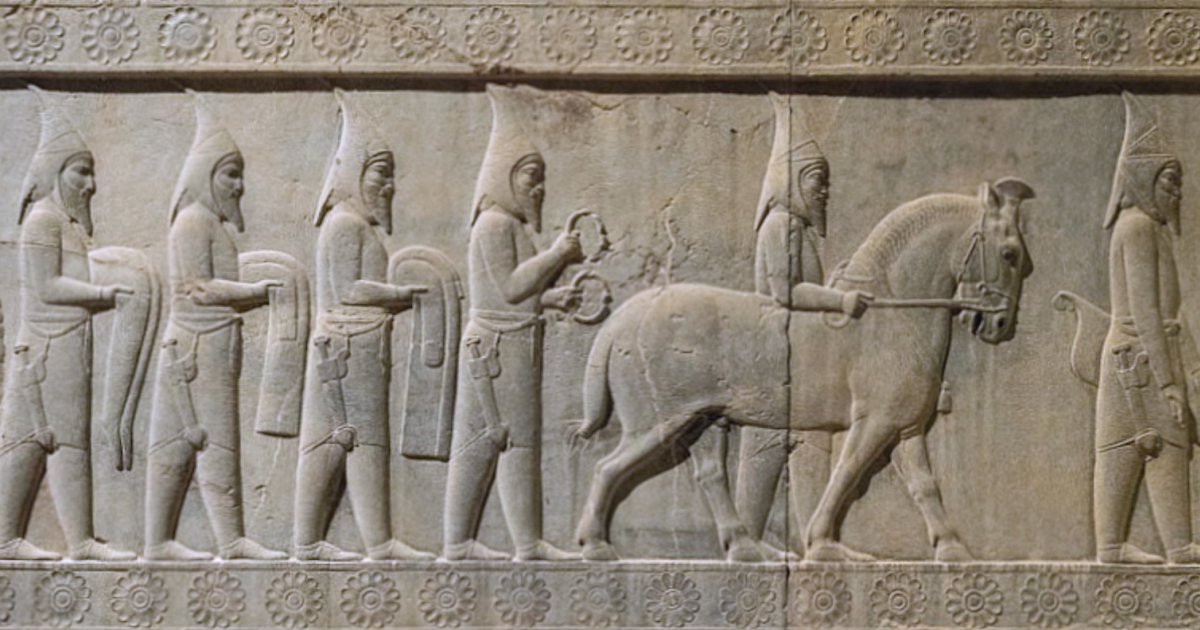The Saka warriors, formidable nomads of the Eurasian Steppe, have long captivated historians and enthusiasts alike for their unique appearance, formidable combat skills, and complex role in ancient empires. Known as expert horsemen and archers, the Saka’s image is vividly preserved in ancient Achaemenid Persian reliefs at Pasargadae and Persepolis, where they are depicted with pointed caps and flexible, fitted attire suited to their dynamic way of life.
The Saka: Masters of Mobility and Warfare
The Saka, a branch of the larger Scythian cultural group, were a nomadic people who thrived across the vast stretches of the Eurasian Steppe. They were known for their adaptability, military prowess, and distinctive attire, which set them apart from other groups. These warriors were famous not only for their skill with the bow and their knowledge of horseback warfare but also for their strategic alliances and complex relationships with powerful empires such as the Achaemenid Persian Empire.

Depiction in Achaemenid Persian Reliefs
The Achaemenid Empire, known for its sophisticated art and architecture, included intricate reliefs in sites like Pasargadae and Persepolis that celebrated the diversity and reach of its empire. Among these are images of the Saka, dating to around 550 BCE, depicted in iconic pointed caps and practical, close-fitting attire. This depiction not only showcases their unique style but also highlights their significance within the Persian Empire.
The Saka were both respected and feared, often serving as mercenaries in the Persian military. These alliances demonstrate the Saka’s pragmatic approach to power and their influence on the Persian military structure. The pointed cap and fitted garments depicted in the reliefs weren’t merely decorative—they were designed for agile movement in battle, making the Saka well-suited to their role as elite warriors.
Symbolism of the Saka’s Unique Attire
The attire of the Saka, as shown in Persian reliefs, was a defining feature of their cultural identity. Their pointed headgear and flexible clothing were more than functional; they symbolized their distinct identity, which set them apart from other nomadic groups and forged their reputation across Central Asia and beyond. The pointed cap, in particular, has become an iconic symbol of the Saka, representing their fierce independence and cultural uniqueness.

Their clothing’s practicality was suited to the harsh environments of the steppes, where flexibility and durability were essential for survival. This style also allowed them to maintain speed and agility in battle, attributes that were essential for their highly mobile, horseback-based warfare. In depicting the Saka this way, the Persian reliefs not only celebrated their skills but also paid homage to the complex cultural interactions within the empire.
Modern Reconstructions of the Saka Warrior
Based on these ancient depictions and archaeological finds, modern reconstructions of the Saka warrior give us a glimpse into their way of life and martial expertise. Scholars and historians have studied both the Persian reliefs and artifacts found in Saka burial sites to create an accurate representation of these warriors. These reconstructions showcase the intricate details of Saka attire, from the pointed caps to the weaponry, revealing the practical aspects of their clothing and gear.

Through modern interpretations, the Saka warrior continues to capture the historical imagination, bringing to life an era when these nomadic fighters were at the height of their influence. The reconstructions remind us of their legacy as culturally distinct and resilient warriors who commanded respect and fear across the ancient world.
Legacy of the Saka: Allies, Adversaries, and Symbols of Resilience
The Saka’s role as both allies and adversaries of powerful empires like the Achaemenid Persian Empire demonstrates their adaptability and importance in ancient military and cultural dynamics. Their presence in Persian reliefs underlines their integral role within the empire’s vast network of allies and mercenaries, as well as the Persian respect for their distinct warrior culture.
The Saka warriors remain a symbol of the resilience and enduring legacy of the nomadic cultures that thrived on the Eurasian Steppe. Their distinct style and battle prowess not only left a mark on Persian art but also contributed to a broader understanding of the interconnectedness of ancient civilizations across Central Asia and beyond.
Conclusion: The Enduring Image of the Saka Warrior
The Saka, with their pointed caps and masterful horsemanship, are immortalized in the stone reliefs of ancient Persia, embodying both strength and cultural uniqueness. These warriors were more than mere fighters; they were icons of a resilient, adaptable, and distinct nomadic culture. The Saka’s enduring image, celebrated in modern reconstructions, continues to resonate as a reminder of their place in the ancient world—a legacy that transcends time and geography, echoing the power and resilience of the steppes.

